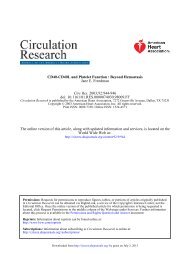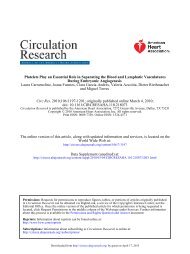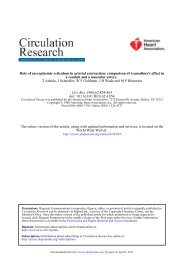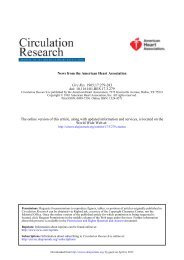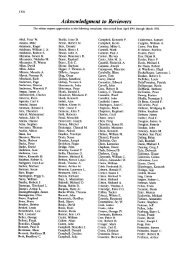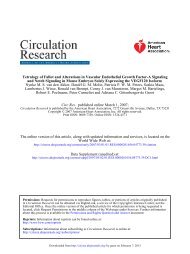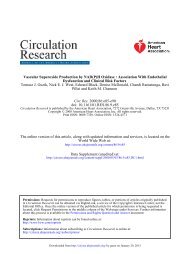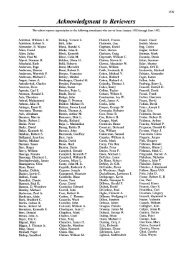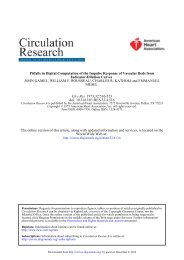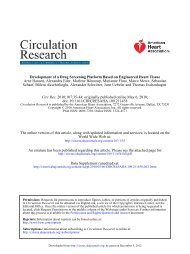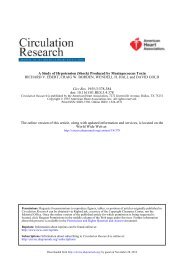Tsuji et. al. amniotic membrane-derived stem cell (2009/205260-R3 ...
Tsuji et. al. amniotic membrane-derived stem cell (2009/205260-R3 ...
Tsuji et. al. amniotic membrane-derived stem cell (2009/205260-R3 ...
You also want an ePaper? Increase the reach of your titles
YUMPU automatically turns print PDFs into web optimized ePapers that Google loves.
<strong>Tsuji</strong> <strong>et</strong>. <strong>al</strong>. <strong>amniotic</strong> <strong>membrane</strong>-<strong>derived</strong> <strong>stem</strong> <strong>cell</strong><br />
(<strong>2009</strong>/<strong>205260</strong>-<strong>R3</strong>)<br />
normoxic atmosphere (20% O 2 ) and 5% CO 2 at 37ºC. Passage was<br />
done every 3 or 4 days.<br />
Umbilic<strong>al</strong> cord and placenta-<strong>derived</strong> mesenchym<strong>al</strong> <strong>cell</strong>s were isolated by<br />
explant culture as described previously 2 . Umbilic<strong>al</strong> cord and chorionic<br />
plate were chopped into sm<strong>al</strong>l pieces, 5-8 mm 3 blocks, and put on 10 cm<br />
dishes with 10 ml hi-glucose Dulbecco Modified Eagle Medium (DMEM-<br />
H) with 10 % f<strong>et</strong><strong>al</strong> bovine serum, 100 U/mL penicillin, 100 µg/mL<br />
streptomycin, and 1µg/mL of amphotericin B (Gibco). Mesenchym<strong>al</strong> <strong>cell</strong>s<br />
came out within one or two weeks, and passage was done once a week.<br />
2. C<strong>al</strong>culation of cardiomyogenic transdifferentiation efficiency in vitro<br />
It is difficult to measure accurately the population of spontaneously<br />
contracted EGFP-positive hAMCs, since they usu<strong>al</strong>ly gather tog<strong>et</strong>her and<br />
generate a colony of <strong>cell</strong>s with thick <strong>cell</strong> layers in the co-culture sy<strong>stem</strong>.<br />
Contraction of each <strong>cell</strong> in the colonized EGFP-positive <strong>cell</strong>s was usu<strong>al</strong>ly<br />
unclear because it was difficult to d<strong>et</strong>ect the margin of each <strong>cell</strong> and to<br />
d<strong>et</strong>ermine which <strong>cell</strong>s were beating and which <strong>cell</strong>s were not. To enable<br />
this, isolation of the <strong>cell</strong> is necessary. Immediately after enzymatic<br />
isolation of the co-cultured hAMCs, we could observe spontaneouslybeating<br />
EGFP-positive hAMCs. However, the number of beating <strong>cell</strong>s<br />
was significantly reduced due to the enzymatic isolation. Therefore, we<br />
defined cardiac troponin-I positive <strong>cell</strong>s as the <strong>cell</strong>s transdifferentiated<br />
into cardiomyocytes. In order to stain the intra<strong>cell</strong>ular protein structure,<br />
we tried using triton-X to permeate the <strong>cell</strong>ular <strong>membrane</strong>. This appeared<br />
to reduce the specific gravity of the <strong>cell</strong>; therefore, we could not rinse the<br />
antibody from the floating isolated hAMCs by centrifugation, <strong>et</strong>c. Thus,<br />
we could not use the FACS sy<strong>stem</strong> in this protocol, but devised an<br />
origin<strong>al</strong> m<strong>et</strong>hod to ev<strong>al</strong>uate the cardiomyogenic induction rate.<br />
Suppl 6



